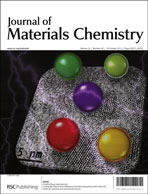Advances in the theory of superhydrophobic surfaces
Abstract
The underlying theories interpreting wetting phenomena are still mainly focused on the Young's equation, the Wenzel equation, and the Cassie–Baxter equation, despite the fact that wetting phenomena have been studied over the past decades. Based on these theories, people have understood that both surface chemical composition and its morphology can influence the contact angle of liquid droplets on solid surfaces. However, such equations are not sufficient to thoroughly explain the mechanisms of wetting phenomena, although they are still necessary. In this feature article, we review the theory, from the classical wetting models to the most recent theoretical advances, of superhydrophobic surfaces with regard to the wetting process, and some promising breakthroughs in the advance of the theory are proposed in the final section.


 Please wait while we load your content...
Please wait while we load your content...